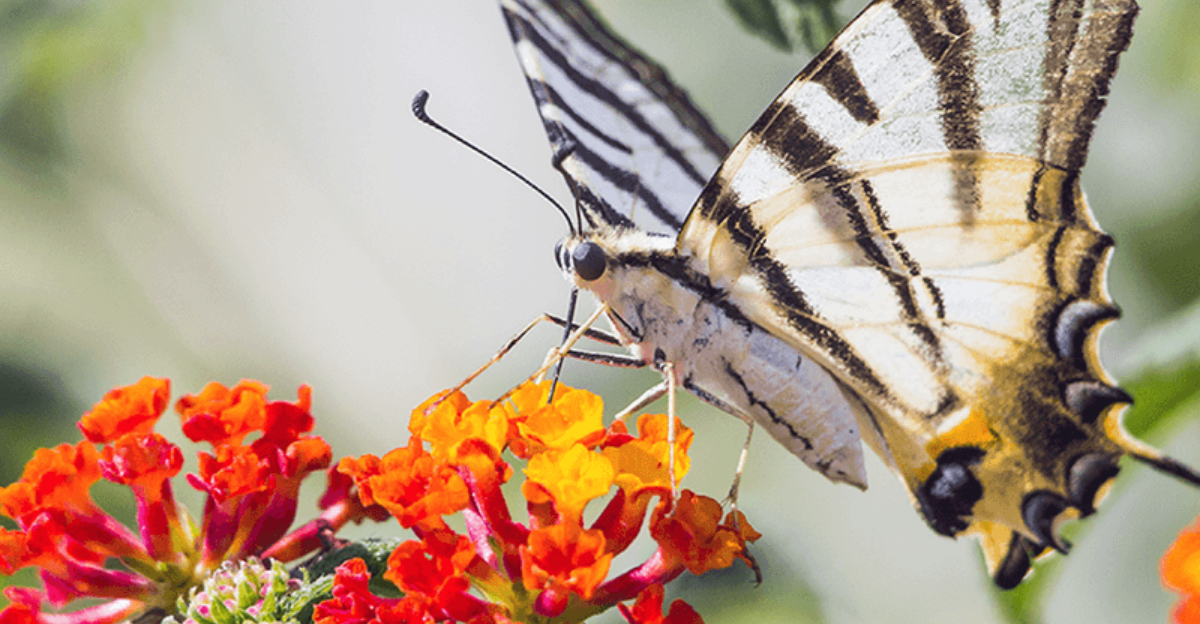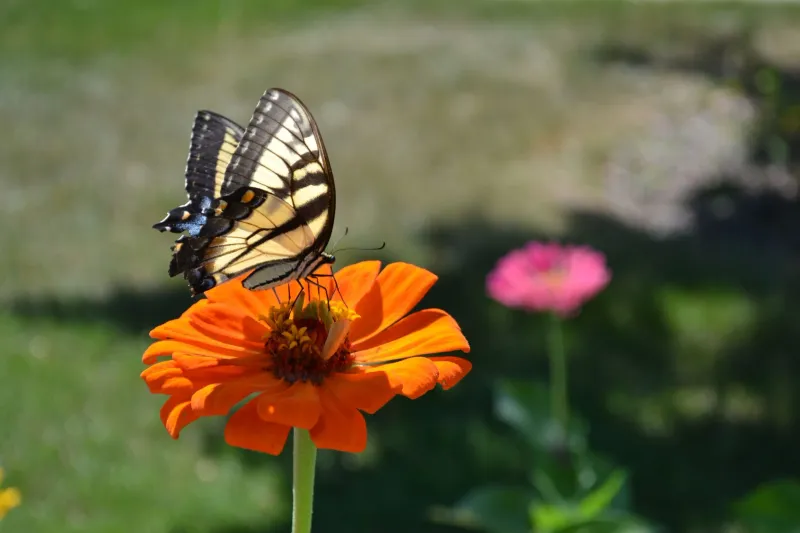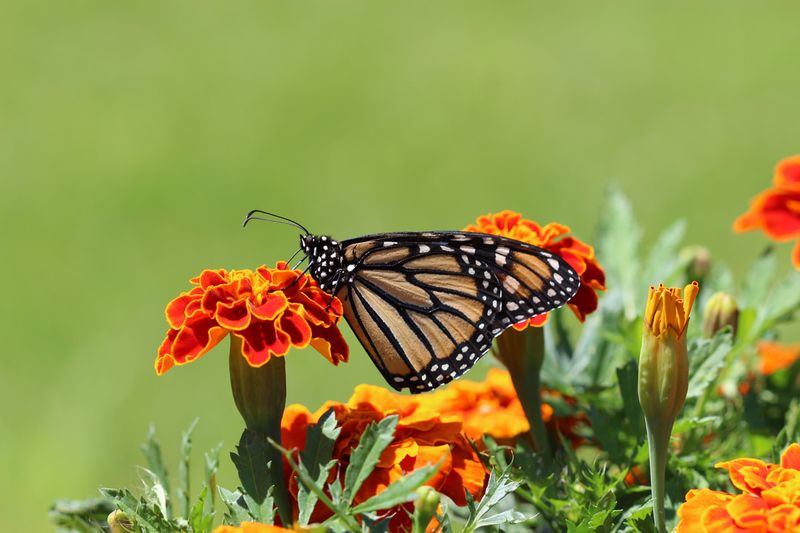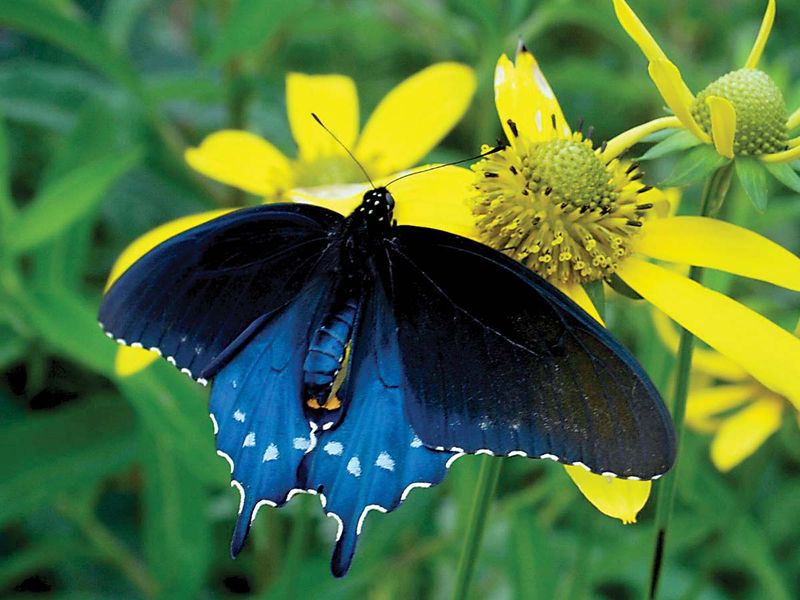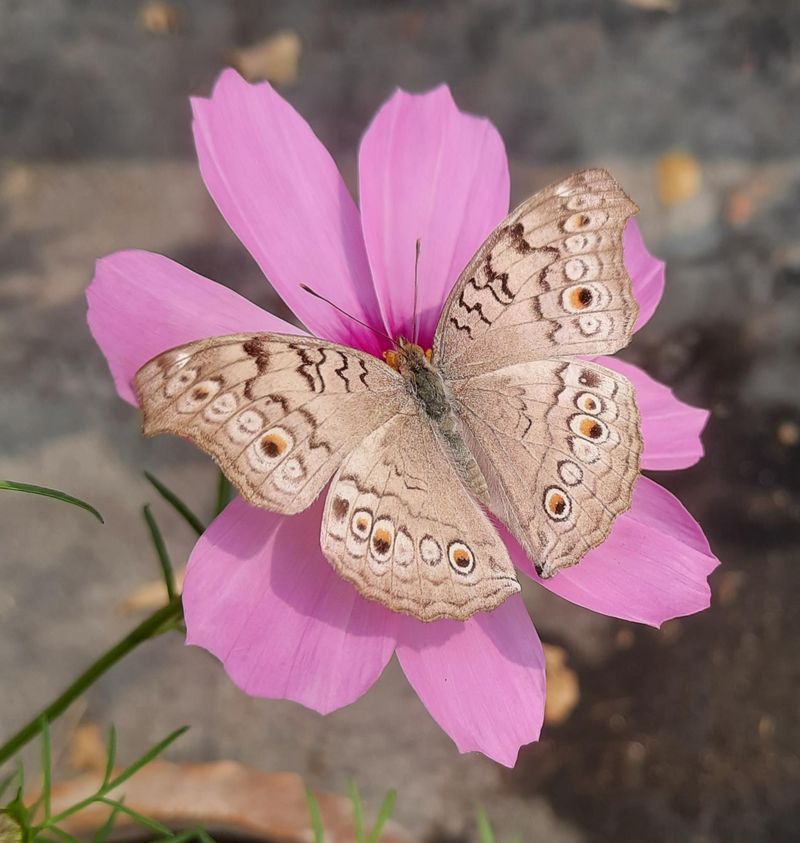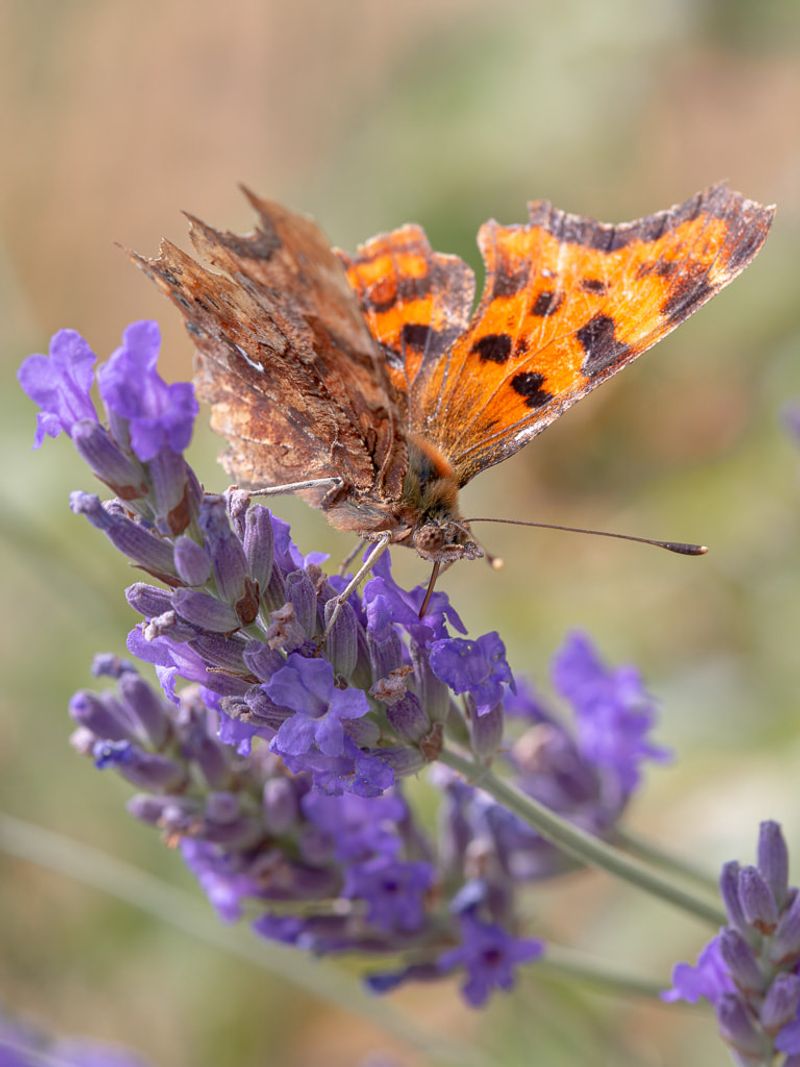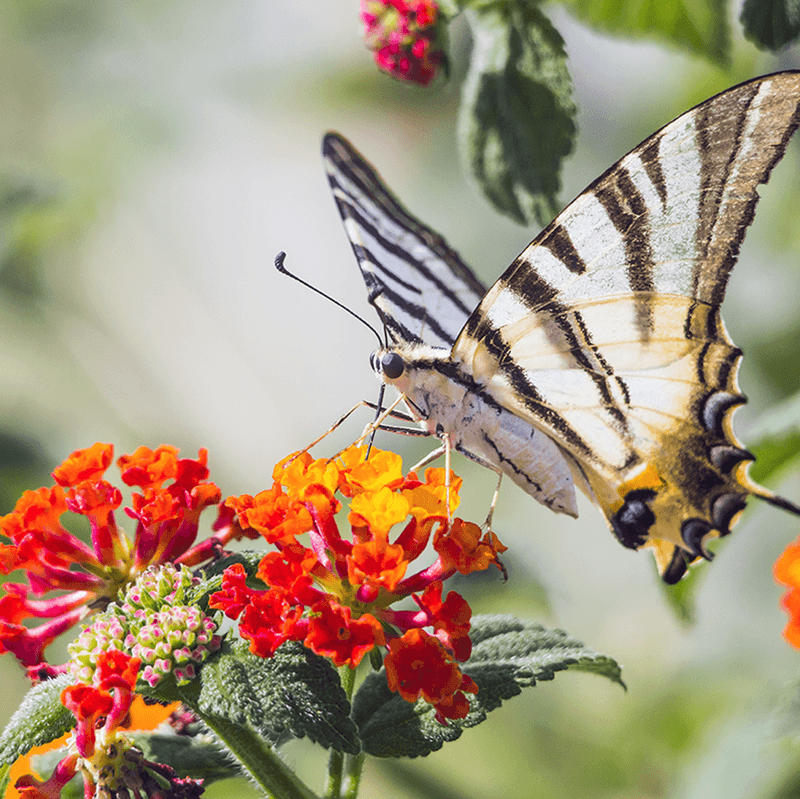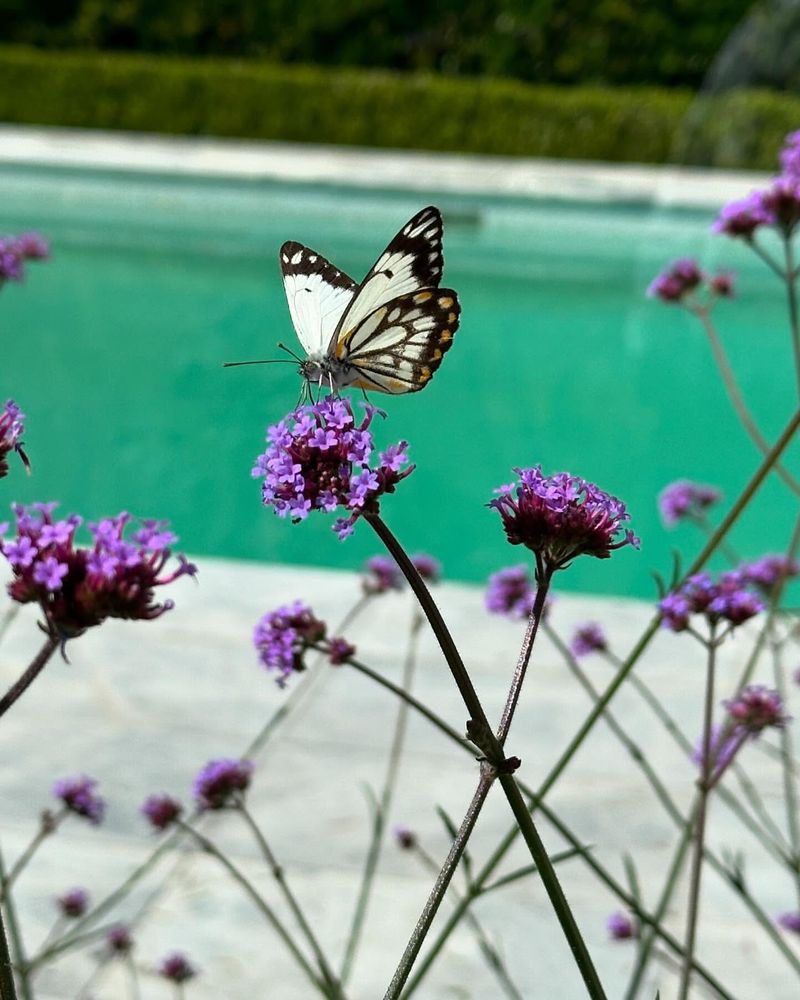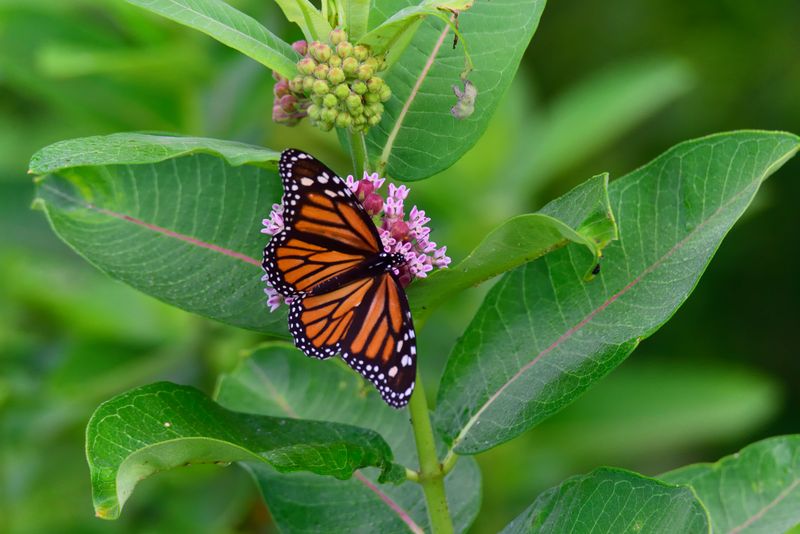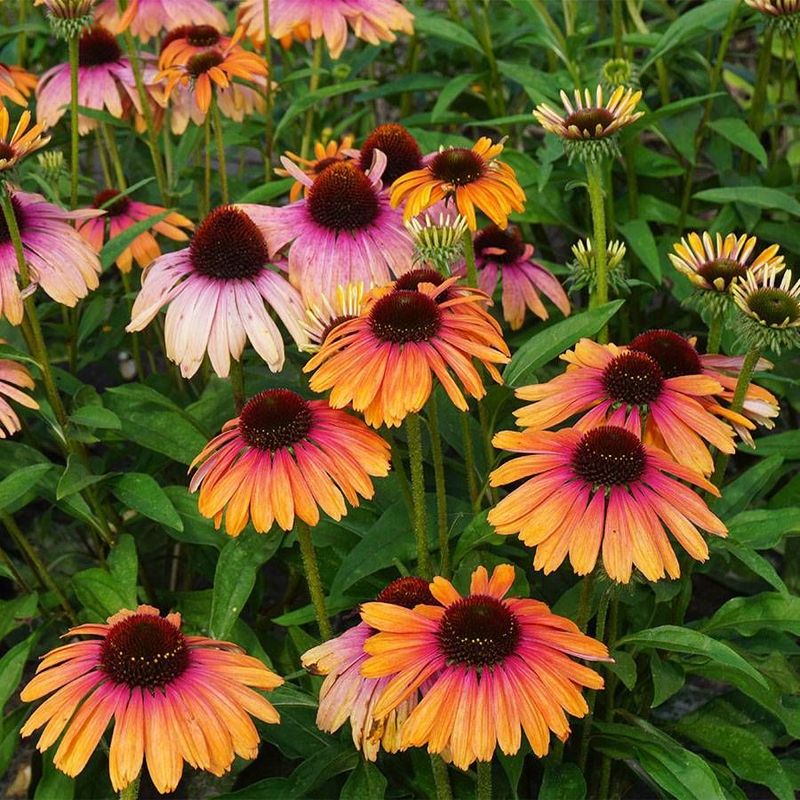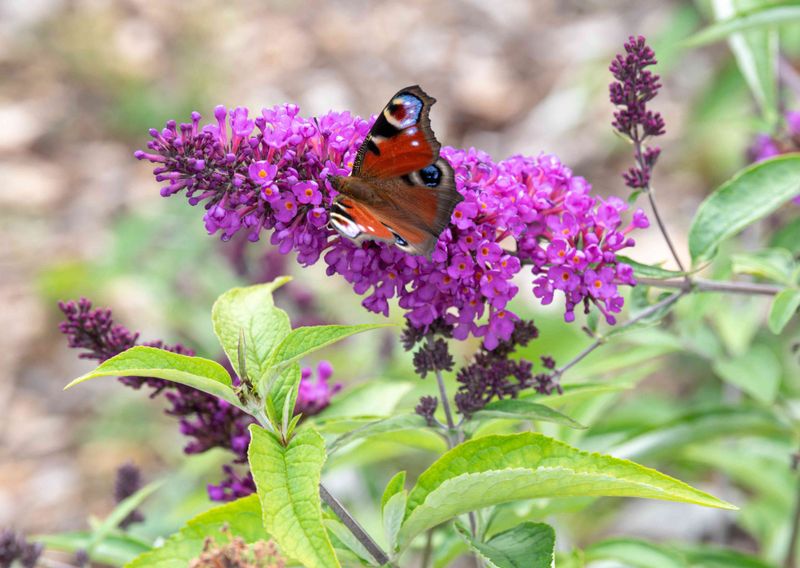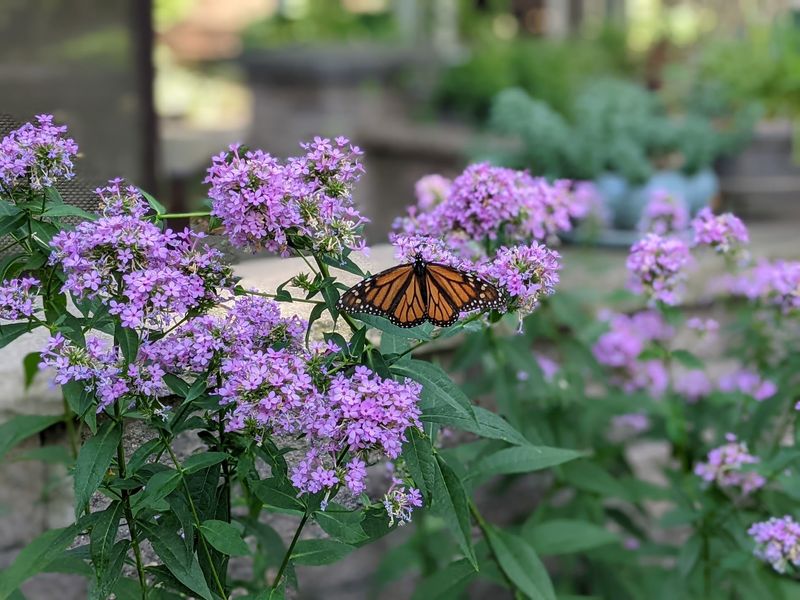Butterflies are not just beautiful creatures; they play a crucial role in pollination. Creating a garden that attracts these fluttering friends can fill your space with life, color, and a sense of tranquility.
By choosing seed-grown flowers, gardeners can enjoy a diverse and sustainable way to invite butterflies into their gardens.
Below, we explore 13 types of flowers that are not only pleasing to the eye but also serve as a magnet for butterflies. Each plant brings its own unique charm and vibrant hues to any garden setting.
1. Zinnia
Zinnias are a gardener’s delight, blooming in a spectrum of colors from bold reds to soft pastels. These annuals are simple to grow from seed and flourish in sunny spots. Their open, daisy-like flowers act as a beacon for butterflies, providing ample nectar.
Zinnias require minimal care, making them an excellent choice for novice gardeners. Regular deadheading encourages more blooms, ensuring a summer-long display.
Whether planted in beds or containers, their dazzling blooms add a splash of color. Butterflies find Zinnias irresistible, and these flowers help create a lively, buzzing garden environment.
2. Marigold
Marigolds are more than just a cheerful garden addition; they are a butterfly’s paradise. Known for their vibrant orange and yellow blooms, these flowers are easy to cultivate from seeds. Their strong scent is a natural pest deterrent, ensuring healthier plants without the need for chemicals.
Marigolds thrive in sunny locations, providing a continuous burst of color throughout the season. Their nectar-rich flowers are perfect for attracting a variety of butterfly species.
By incorporating marigolds into your garden, you not only enjoy their beauty but also create a welcoming habitat for pollinators.
3. Aster
Asters, with their star-shaped blooms, are a favorite among butterflies. These perennial flowers, which can be easily grown from seed, thrive in well-drained soil and full sunlight. Their palette of purples, pinks, and blues provides a striking contrast in any garden.
Butterflies are particularly drawn to asters in the late summer when other nectar sources might dwindle. Deadheading spent blooms will promote prolonged flowering.
Planting asters ensures a vibrant, butterfly-filled garden late into the fall, making them a valuable addition for gardeners aiming for extended seasonal beauty.
4. Sunflower
Sunflowers are iconic, towering over gardens with their large, cheerful faces. These flowers are as attractive to butterflies as they are to humans. Easily grown from seed, they require a sunny spot and space to stretch upwards.
Sunflowers provide abundant nectar and seeds, supporting not just butterflies but also birds. Their height and size make them an ideal backdrop in garden landscapes.
Regular watering and staking help sunflowers reach their full potential. Their bright yellow petals act as a natural lure for butterflies, ensuring your garden becomes a buzzing hub of activity.
5. Cosmos
Cosmos flowers bring a touch of elegance to any garden, with their slender stems and delicate petals. These annuals are a butterfly’s delight, offering an abundance of nectar. Grown easily from seed, they flourish in sunny, well-drained areas.
The variety of colors, from pink to white, adds a soft, romantic feel to garden spaces. Cosmos require minimal maintenance, making them perfect for busy gardeners.
To ensure continuous blooming, regularly deadhead faded flowers. These graceful blooms not only attract butterflies but also add a whimsical charm to garden landscapes.
6. Lavender
Lavender is famed for its soothing fragrance and striking purple flowers. This perennial can be grown from seed, though patience is required as it takes time to establish.
Lavender thrives in sunny, well-drained locations and is a magnet for butterflies and bees alike. Its aromatic foliage not only deters pests but also adds a sensory delight to gardens.
Regular pruning encourages bushier growth and more flowers. Lavender’s timeless beauty and ability to attract pollinators make it a cherished addition to any butterfly garden. Its calming presence enhances both visual and olfactory garden experiences.
7. Black-eyed Susan
Black-eyed Susans are a staple in butterfly gardens, known for their bright yellow petals and dark centers. These perennials are easy to grow from seed and flourish in sunny locations with well-drained soil.
Their long blooming season provides a consistent nectar source for butterflies, particularly in late summer and early fall. Regular deadheading encourages continuous flowering.
These hardy flowers withstand varying weather conditions, making them a reliable choice for gardeners. Black-eyed Susans not only enhance garden aesthetics but also support a thriving ecosystem by attracting diverse butterfly species.
8. Lantana
Lantanas are vibrant perennials that bring a profusion of color to gardens. Known for their clusters of small, multicolored flowers, they are a favorite among butterflies. Lantanas can be grown from seed, though they require warmth and sunlight to thrive.
These drought-tolerant plants bloom continuously, providing a reliable nectar source. Their resilience makes them suitable for various garden settings, from borders to containers.
Pruning encourages denser growth and more blooms, enhancing their visual appeal. Lantanas’ bright colors and butterfly-attracting qualities make them a valuable addition to any vibrant garden landscape.
9. Verbena
Verbena is a versatile plant known for its vibrant purple flower clusters. These plants are easily grown from seed and thrive in sunny, well-drained environments. Butterflies are particularly attracted to verbena for its rich nectar supply.
Their long blooming period ensures a consistent butterfly presence in the garden throughout the growing season. Verbena’s compact form makes it suitable for borders or as ground cover.
Regular deadheading keeps the plants looking fresh and promotes more flowers. Verbena’s beauty and ability to draw butterflies make it a delightful choice for any garden enthusiast.
10. Milkweed
Milkweed is a vital plant for butterfly enthusiasts, especially those looking to attract Monarchs. These perennials are easily grown from seed and thrive in sunny locations with well-drained soil.
Milkweed provides both nectar and habitat for Monarch caterpillars, supporting their life cycle. Once established, these hardy plants require little maintenance and are drought-tolerant.
Their clusters of pink or orange flowers are a striking addition to any garden. By planting milkweed, gardeners contribute to the conservation of Monarch butterflies, providing a crucial lifeline for these migratory beauties.
11. Coneflower
Coneflowers, also known as Echinacea, are loved for their distinctive spiky centers and drooping petals. These perennials are easily started from seed and thrive in sunny, well-drained locations.
Their long-lasting blooms provide ample nectar for butterflies from mid-summer to fall. Coneflowers are resilient, enduring various weather conditions with ease.
Regular deadheading promotes more blooms and prevents self-seeding.
Their striking appearance and butterfly-attracting properties make coneflowers a must-have for any pollinator-friendly garden. By planting coneflowers, gardeners can enjoy both visual beauty and a flurry of butterfly activity.
12. Buddleia
Buddleia, commonly known as the butterfly bush, is renowned for its ability to draw in butterflies. These shrubs can be grown from seed and favor sunny, well-drained locations. Their elongated clusters of purple, white, or pink flowers are a stunning sight.
Buddleia blooms from summer to fall, providing a long-lasting nectar source. Regular pruning helps maintain their shape and encourages more blooms.
These hardy plants are a cornerstone of any butterfly garden, attracting a diverse range of species. Buddleia’s beauty and functionality make it a prized plant for gardeners looking to support pollinators.
13. Phlox
Phlox is celebrated for its vibrant blooms and sweet fragrance, making it a favorite in butterfly gardens. These perennials are easily grown from seed and thrive in sunny to partially shaded areas.
Phlox offers a rich nectar source, attracting butterflies throughout its long blooming season. Their clusters of pink, purple, or white flowers add a burst of color to any landscape.
Regular deadheading encourages prolonged blooming and keeps the plants tidy. Phlox’s ability to draw butterflies and enhance garden aesthetics makes it a cherished addition for gardeners aiming to create a lively, pollinator-friendly environment.
